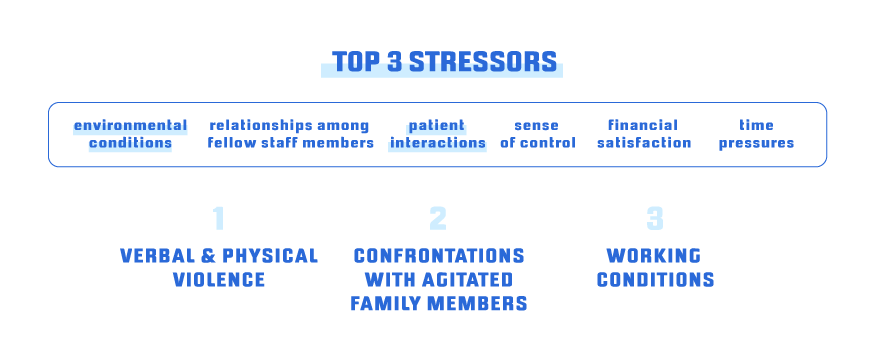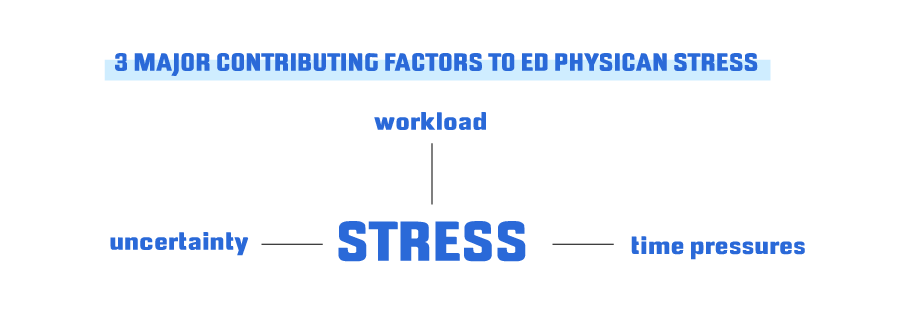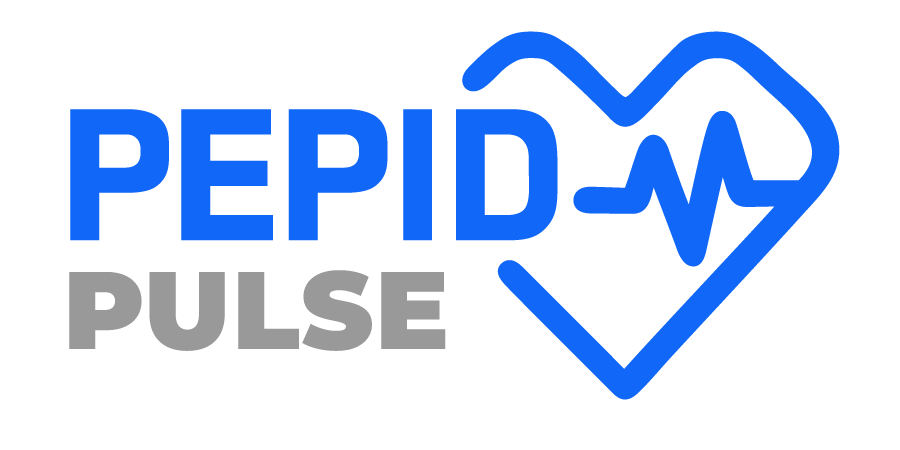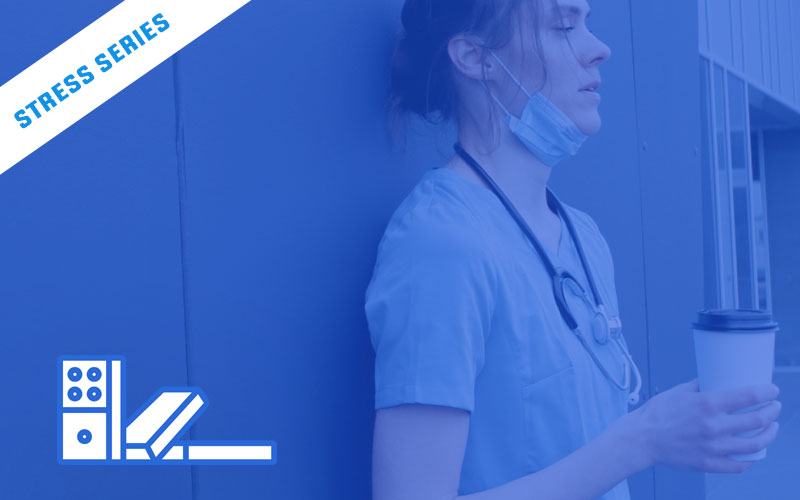The Double-edged Sword
In the field of medicine, the Emergency Department presents a unique working environment that doesn’t quite compare with other clinical settings. It can be looked at as a double-edged sword. On one hand, the ED offers prestigious, high value, and at times challenging work for physicians; however, due to the unpredictable and volatile nature of the ED, it can also be demoralizing for physicians who aren’t equipped to handle such chaos. It is no wonder that among all practicing physicians, occupational stress and burnout levels are highest in ED physicians.
Physician well-being has been a constant concern in the healthcare industry. The nature of the profession is demanding and stressful, with long working hours and heavy workloads. Physicians are also often emotionally burdened by dealing with patients who are in distress or facing life-threatening conditions. To add to this, the healthcare industry is constantly evolving, with technological advancements and ever-changing regulations. All these factors can take a toll on ED physicians, which can ultimately affect the quality patient care. It’s essential that healthcare organizations prioritize the health and wellness of their physicians by providing them with resources and support to cope with the demands of their profession.

Common ED Stressors
ED physicians experience a plethora of various stressors on a day-to-day basis. The Rambam Health Care Campus in Israel administered a questionnaire to assess the most stressful factors experienced by ED staff in which participants were asked questions regarding environmental conditions, relationships among fellow staff members, patient interactions, sense of control, and financial satisfaction. As a result of this questionnaire, it was identified that the top three stressors according to ED physicians in order were violence (both verbal and physical), confrontations with agitated family members, and working conditions.

Workplace Violence
Workplace violence is by far the most serious of the stressors that ED physicians are subject to, and one of the leading causes for physicians leaving their positions in the ED. The American College of Emergency Physicians reported that about half of ED physicians have been physically assaulted while at work and 80% claim that violent events are detrimental to patient care. This is an issue that must be resolved at the federal level, which is why the ACEP began the “No Silence on ED Violence” campaign to raise awareness for the cause. They also sent a letter of support to Congress to advocate for the Workplace Violence Prevention for Health Care and Social Service Workers Act and urge legislators to consider the provisions necessary for safety in the ED for patients and staff alike.
Have you had experience with Violence in the Emergency Department?
#StopEDViolence
Share your story with No Silence on ED Violence >
Dealing with agitated family members is a common occurrence in the ED that goes hand-in-hand with workplace conditions. While cooperation and mutual understanding between a patient’s family and their physician can facilitate in relieving the anxiety of both parties, this appropriate interaction is more difficult to attain in the ED. In an emergency setting, it is comprehensible as to why family members would be stressed depending on the severity of their loved one’s condition; however, sometimes stress levels are exacerbated by the surrounding environment of the ED. The Rambam Health Care Campus outlines what they refer to as the cycle of overcrowding to emphasize the escalating stress levels that tend to build upon each other as the ED fills up.

Domino Effect of Overcrowding
Overcrowding is commonplace in many hospitals nowadays as life-expectancy continues to rise and the elderly population expands. Another contributing factor to overcrowding is the lack of insured people in the country due to the excessive costs of insurance premiums. The Emergency Medical Treatment and Labor Act prevents hospitals from turning away people in need of treatment even if they are unable to pay for it.
The workflow of the ED is interrupted as a result of overcrowding due to the increased waiting times of the patients which increase pressures on the ED staff, increases the chances of errors, and increases patient mortality. The rowdiness and lengthy waits in the waiting room are a source of frustration for family members, making them more likely to be confrontational to ED physicians. It also increases the likelihood that they will resort to violence. This in turn stresses the physicians and adds to the already immense amount of pressure weighing on them. The physicians begin to feel as if they are losing their sense of control and begin to make mistakes, which frustrates family members further and thus begins the vicious cycle of overcrowding that results in a diminished quality of care.
Mitigating Burnout Syndrome
Patient care is the highest priority in the ED; however, to prevent near misses and adverse health events in the ED the well-being of the physician must also be prioritized. If they are unwell then it is unlikely that they will be able to provide their patients with the proper care they need. Around 7-10% of all physicians show signs of depression, suicidal thoughts, alcoholism, substance abuse, and unhappy marriages. Among ED physicians, in particular, substance abuse is at a much higher prevalence. These conditions all arise from Burnout Syndrome, which Gillian Schmitz of the University of California defines as having three components: emotional exhaustion, depersonalization, and low personal accomplishment. Currently, there is no consensus on the best method of intervention for physicians experiencing Burnout Syndrome, but raising awareness about it and decreasing the stigma around it would allow physicians more comfort in reaching out to seek help.
Self Relaxation Techniques for ED Physicians
To help draw the attention of ED physicians to their health, which studies show that they like to avoid, a team for the University of Catania in Italy designed an autogenic training program. This program aimed to teach physicians self-relaxation techniques based on the passive concentration on bodily perceptions. They performed a trial run of the program which involved 16 sessions that occurred twice a month and were supervised by psychologists. Each of these sessions was themed around orienting the physicians with their physiology by drawing their attention to things like cardiac regulation, respiratory control, and “Plexus Solaris.” The physicians were asked to practice the relaxation techniques that they learned regularly, and at the conclusion of the trial, they reported decreased levels of stress and increased motivation.

Physicians…reported decreased levels of stress and increased motivation after practicing self-relaxation techniques.
Stress-Scoring System to Distribute Patients
Another research team from the Public University of Navarre in Spain examined an alternative approach to limiting the occupational stress experienced by ED physicians. They identified workload (the number and severity of the patients being cared for by a physician simultaneously), time pressures (the time interval between patient arrival and being seen by a physician), and uncertainty (lack of knowledge about a patient’s conditions and the tasks required to provide medical assistance) as three major contributing factors to their stress. The team claimed that due to the simple rotation method as the means of patient distribution to physicians that occurs in many hospitals, patients are often unevenly distributed.

While physicians might see the same number of patients in a given day, one physician may be assigned higher acuity patients by chance that require high levels of care and attention, while another physician may receive all lower acuity patients. To remediate the unequal distribution, the research team proposed a method to improve patient flow through real-time monitoring of physicians’ stress levels.
To do this they broke down potential stressors into categories and assigned these categories different values to determine the various stress levels of physicians. These categories included whether or not the physician is supervising a resident, the patient priority that is assigned to them after being triaged, the phase of treatment for currently assigned patients, whether or not patient wait time targets have been exceeded, and the number of patients assigned to the physician. Based on the stress scores assigned to each physician, the patients can be assigned more evenly.
This method was also put through a trial run, and as a result, there was a 60% reduction in variability of stress levels among the participating physicians, along with a 10% reduction in stress overall. This suggests that implementing this method could facilitate mitigating Burnout Syndrome and decreasing errors.

60% reduction in variability of stress levels among the participating physicians, & 10% reduction in stress overall
Develop a culture of education and awareness
While no specific method of intervention has proven to be more beneficial than another, it is important to at least develop a culture of education and awareness regarding the daily stresses endured by those on the front lines of medicine. Coming into close contact with sudden death and highly contagious disease would take its toll on anyone. The well-being of ED physicians must be closely monitored for their sake and the sake of patients as well.
Written by Marianthi Vasiliadis
References
Givon, D., & Basis, F. (2017). Burnout among Nurses and Physicians in the Emergency Department: a Comparison Study. SciFed Journal of Emergency Medicine, 1(1).
American College of Emergency Physicians. Violence in the Emergency Departmen: Resources for a Safer Workplace. https://www.acep.org/administration/violence-in-the-emergency-department-resources-for-a-safer-workplace/
Johnston, A., Abraham , L., & Greenslade, J., et al. (2016). Review article: Staff perception of the emergency department working environment: Integrative review of the literature. Emergency Medicine Australia, 28(1): 7–26.
Schmitz, G. R., Clark, M., & Heron, S., et al. (2012). Strategies for coping with stress in emergency medicine: Early education is vital. Journal of Emergencies, Trauma, and Shock, 5(1): 64–69.
Caponnetto, P., Magro, R., Inguscio, L., & Cannella, M. C. (2018). Quality of life, work motivation, burn-out and stress perceptions benefits of a stress management program by autogenic training for emergency room staff: A pilot study. Mental Illness, 10(2): 7913.
Cildoz, M., Ibarra, A., & Mallor, F. (2020). Coping with stress in emergency department physicians through improved patient-flow management. Socio-Economic Planning Sciences.


Trackbacks/Pingbacks